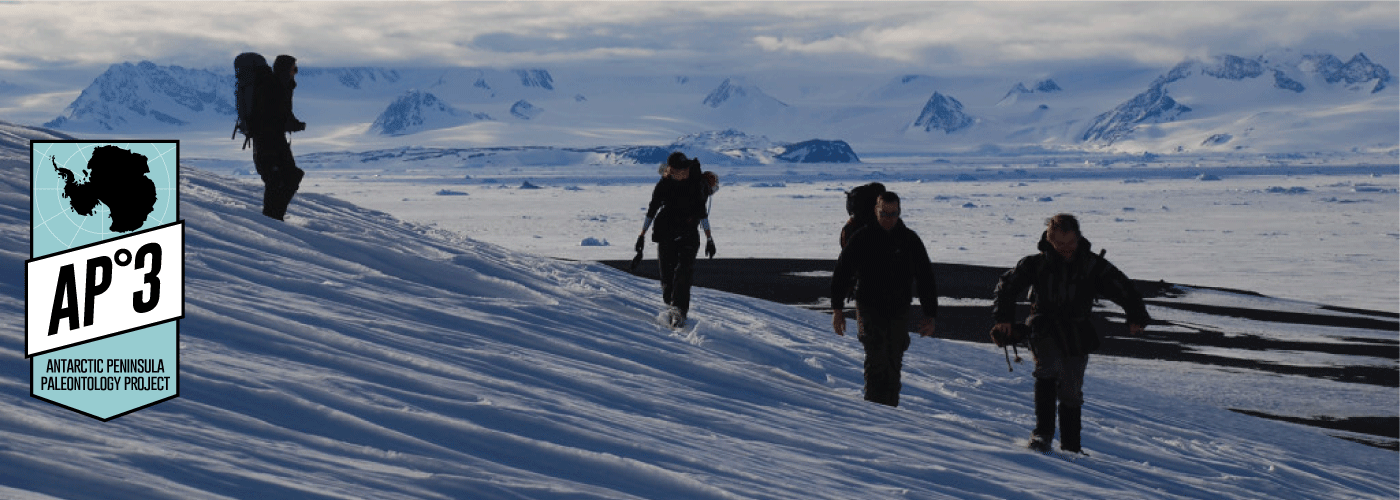
One half of the rock concretion that bears the original skeleton of the duck-like Cretaceous bird Vegavis iaai (left), along with a computed tomographic (CT) image of the same specimen (right).
AP3 Principal Investigator Julia Clarke has been conducting research on fossil birds from Antarctica for more than a decade. Her most notable work to date along these lines was the analysis of a partial skeleton of a new genus and species of Cretaceous bird from Vega Island that she and colleagues named Vegavis iaai in the prestigious scientific journal Nature in 2005. Vegavis is important in being a close relative of today’s ducks and geese, and therefore the only definitive member of any modern bird group that has yet been identified from the Mesozoic Era (the Age of Dinosaurs). All other Mesozoic birds for which evolutionary positions can be confidently established belong to groups that died out at or prior to the Cretaceous–Paleogene extinction event (which also killed off all non-avian dinosaurs such as T. rex and Triceratops).
Subsequent work on CT scans revealed that the Vegavis fossil contains a fossilized syrinx, the vocal organ that birds possess which is analogous to our voice box. This is the only known syrinx fossil from the Age of Dinosaurs, and its morphology shows that Vegavis was able to make sounds much like those of its modern relatives. These results were published in Nature, in 2016.
Julia, Matt Lamanna, Pat O’Connor, and other collaborators are currently studying additional Cretaceous bird remains from Vega Island, including a number of fossils discovered during the AP3’s 2011 expedition.
